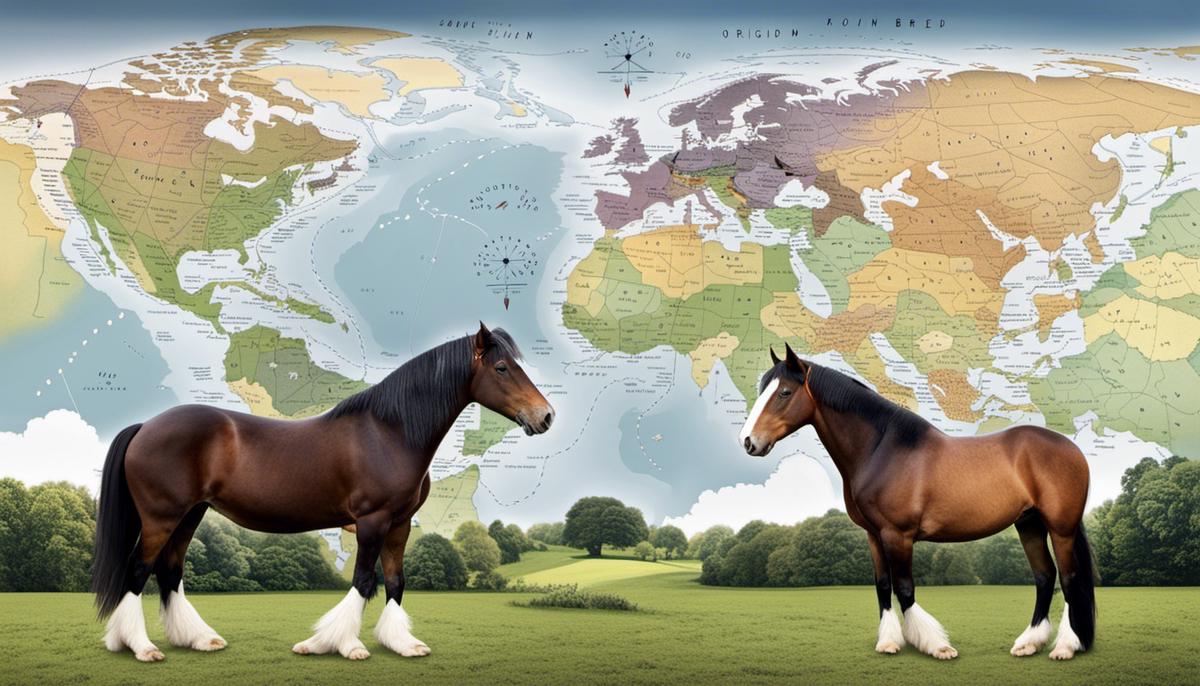The enchanting world of horses is varied, each breed holding its own wonders, abilities, and tales. Delving into the intricate details that pertain to two specific breeds: The majestic Shire horse and the versatile Quarter horse, is a journey of discovery well worth taking. Originating from the United Kingdom and the United States respectively, these horses’ worlds apart in terms of physical attributes, temperament, and applications. With substantial contributions noted in modern-day equestrian pursuits, they remain vital members of the horse community. Consequently, this exploration navigates their histories, investigates their physical and temperamental traits, and assesses their present-day uses and overall health.
Table of Contents (Horspedia)
History and Origins
History and Origins of the Shire Horse
The Shire Horse finds its roots in the English countryside, specifically in the central regions of England. From as far back as the Roman times, these horses were recognized for their strength and size, groomed for farming, and war purposes. They are descendants of the ‘Great Horse,’ a massive breed that medieval knights rode into battles. Breeding of the Shire Horse as we know it today began in the 18th century when the black-and-white Flemish and Friesian horses were crossed with local breeds to increase size and strength. This horse became indispensable for pulling heavy loads over long distances, particularly in the brewery industry. While mechanization during the Industrial Revolution threatened the breed, recent years have seen its revival for both work and show purposes.
Evolution of the Shire Horse
The Shire Horse has evolved over the centuries, both in physical characteristics and purpose. Originally bred for their immense strength and robust build, they boasted a size range of up to 18 hands (one hand is equivalent to four inches), and some could pull weights up to three tonnes. However, as mechanized farming and transport took over, the need for such powerful horses declined. The shire horse adapted, becoming somewhat smaller, and today they range between 16 and 17 hands. They are now highly sought after for their elegant appearance, gentle nature, and versatility in various equestrian activities, including dressage and show jumping.
History and Origins of the Quarter Horse
Turning our focus to the New World, we find the origins of the Quarter Horse in colonial America. The breed developed during the 1600s when English Thoroughbreds were crossed with native American breeds, including the Chickasaw horse, a breed descended from Spanish stock. The “quarter” in their name refers to the quarter-mile racing distance which these horses excelled at, often outrunning even Thoroughbreds. Apart from racing, these horses were also used for various tasks on ranches, including cattle herding.
Evolution of the Quarter Horse
Over the years, the Quarter Horse has evolved into a versatile breed, maintaining its agility and speed, but also gaining recognition as a show horse and working ranch horse. The breed is known for its muscular build and compact size, typically between 14 and 16 hands. Besides racing, the Quarter Horse excels in rodeo events, particularly cutting and reining. The American Quarter Horse Association, founded in 1940, has been instrumental in the development and promotion of the breed, with the breed registry now being one of the largest in the world.
Significant Contributions in the Equine World
The Shire and the Quarter Horse have both made substantial contributions to the equine community. Known for their massive strength, calm disposition, and aptitude for heavy labor, Shires have played a fundamental role in the advancement of farming and industrial sectors. The breed’s resurgence in recent times serves as testimony to its enduring charm.
Conversely, the Quarter Horse, as a symbol of American history and culture, is cherished for its speed and agility. These qualities mark them as favorites in both the racing and rodeo scenes. Their combination of versatility and a gentle demeanor have allowed them to gain popularity among working ranchers and pleasure riders alike. In fact, the Quarter Horse’s lineage has markedly influenced the development of other breeds like the Paint Horse and the Appaloosa.
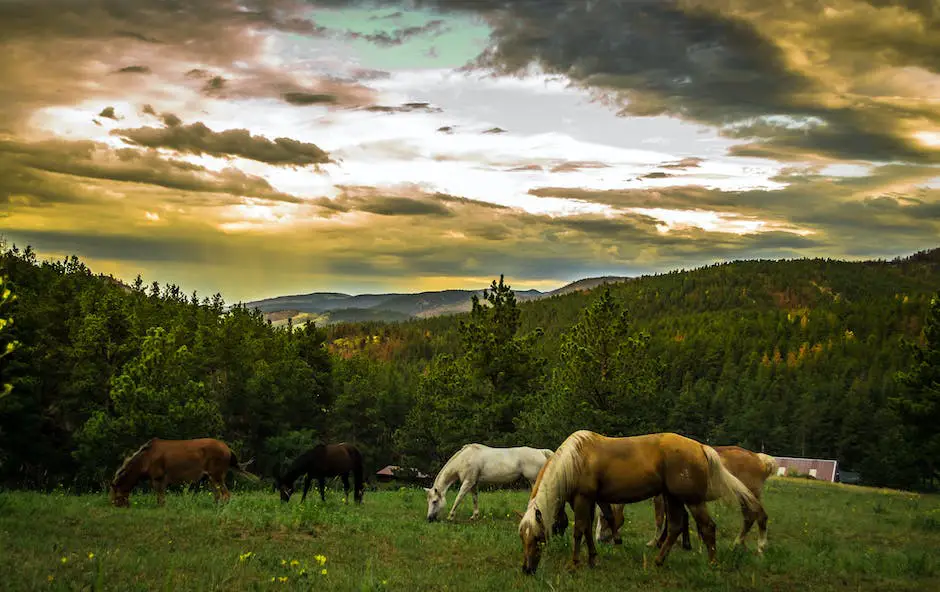
Physical Attributes and Temperament
Comparative Physical Characteristics: Shire Horse and Quarter Horse
Shire horses and Quarter horses are distincly different breeds, boasting unique physical attributes. Shire horses, one of the tallest breeds, generally see males standing at 17 to 19 hands and females roughly a hand shorter. They tend to weigh between 1,800 to 2,400 pounds, a testament to their formidable strength and robustness. Shires can be found in colors like black, bay, grey, and chestnut, typically featuring significant “feathering” – long, silky hair – on their lower legs.
In contrast, the Quarter horse is of smaller stature, with heights ranging from 14 to 16 hands and measureable weights of about 950 to 1,200 pounds. They are recognized for their muscular, compact bodies. Their coats present a dazzling array of colors, including bay, black, brown, buckskin, dun, gray, palomino, red roan, blue roan, and white, as well as various color and white combinations.
Physical Abilities: Strength, Speed, and Stamina
Their distinct sizes result in differing physical abilities. The Shire horse, due to its size and muscular build, is known for its extraordinary strength and pulling power. Historically, these horses were used in farms, for pulling heavy loads, and in wars, showcasing their stamina and power. However, their size does not lend much speed; Shire horses are not known for their swiftness or agility.
On the other hand, the Quarter horse is renowned for its sprinting ability over short distances, hence the name “Quarter,” reflecting their supremacy in quarter-mile races. Their build allows an extraordinary burst of speed, agility, and quick maneuverability, thus making them popular in various equestrian sports, rodeos, and horse shows.
Temperament: Shire Horse Vs. Quarter Horse
In terms of temperament, Shire horses are known for their gentle and docile demeanor. Despite their size, they are generally calm, easy to handle, and often referred to as “gentle giants,” making them excellent workhorses.
Similarly, Quarter horses have a well-earned reputation for a calm and steady temperament. They are known for their intelligence, versatility, and willingness to work, often showing adaptability in various situations. This makes them desirable for many types of riders, from those performing ranch work to those competing in high-level equestrian sports.
Drawing the curtain to a conclusion, the Shire horse and the Quarter horse stand as distinct paragons in the equine world, each championing an exceptional blend of physical characteristics and temperament. The diversity eked from their disparity in size, inbuilt capabilities, and behavioral nuances is a testament to the versatility in horse breeds and their adaptability to myriad purposes.
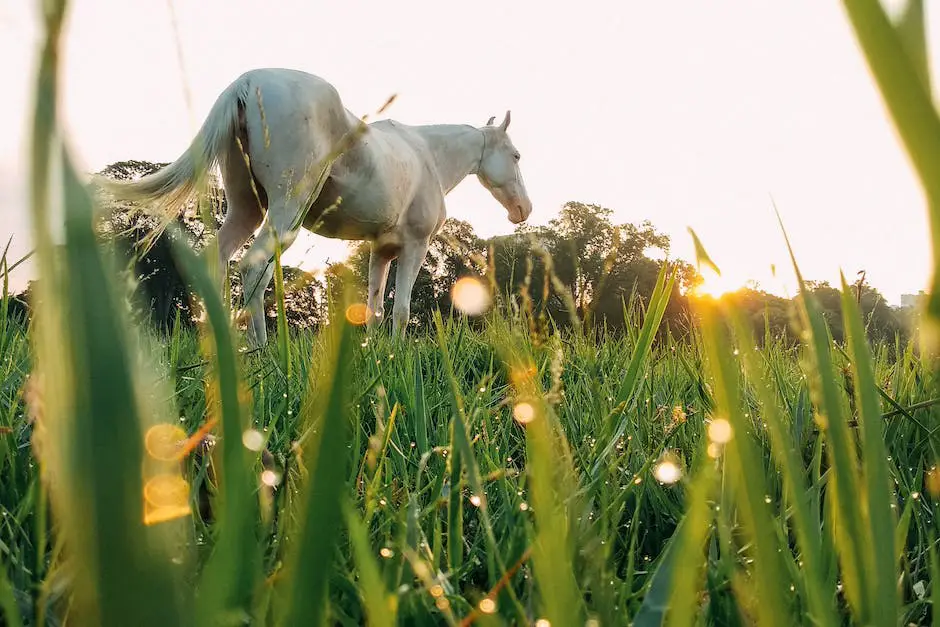
Uses and Suitability
Shire Horses: The Colossi of Pastures
When it comes to captivating and well-cherished horse breeds worldwide, the Shire and the Quarter horse command attention. Before the advent of modern machinery, Shire horses, inherent draft breeds, held an instrumental position in agriculture- they were called upon for heavy pulling tasks and were synonymous with tireless manual labor within the fields. Their unparalleled strength and size, with some towering at an impressive 17 hands, position them as Hercules of horses. Their notable feat lies not only in their might, but also their serene and gentle demeanor, making them the preferred pick for laid-back riders or those in search of gentle equine companionship.
Shire horses have also carved out their space in entertainment, where they elegantly hoof their way through parades, exhibitions, and historic role plays. Their bulk and might do cut back on their athletic prowess to some extent, thereby making them less ideal choices for competitive or strenuous activities. Shire horses enjoy a substantial lifespan of 25 to 30 years. Yet, they are susceptible to certain health conditions like chronic progressive lymphedema and equine metabolic syndrome, making regular health check-ups imperative. Nonetheless, with proper care, these horses are generally hearty and haven magnificent staying power.
Quarter Horses: Fast and Versatile
In contrast, the Quarter horse, named for its ability to outrun other breeds in the quarter-mile races, is a remarkable creature of speed. This makes them ideal candidates for horse racing, rodeo events and hunt seat. Their agility also renders them excellent workhorses in cattle ranches, performing well in tasks that require quick movements and sudden starts or stops.
Quarter horses are smaller but more muscular than the Shire horse, standing typically at around 14 to 16 hands tall. They are known for their steady, level-headed nature, making them a favorite among amateur and experienced equestrians alike. The breed also displays an impressive lifespan of 25 years on average, but some have been known to reach 35 years with optimal care. Horse owners should be aware, however, of the breed’s predisposition to certain genetically linked diseases, such as Hyperkalemic Periodic Paralysis Disease (HYPP) and Polysaccharide Storage Myopathy (PSSM).
Selecting the Ideal Horse Based on Your Requirements
The ultimate choice between a Shire horse and a Quarter horse will fundamentally be influenced by the rider’s specific requirements, their level of ability and experience. A Shire horse is sizeable, strong and notably placid, making it a suitable choice for anyone in need of a peaceful yet powerful companion, but it’s not ideal for demanding, high-energy activities.
Conversely, the Quarter horse is an excellent option for those involved in racing, ranch labor, or any other activity requiring speed, quickness, and agility. For those in need of a horse of good size that can be relied upon for both work and leisure riding, the Quarter horse also makes a suitable choice. Even though both breeds typically tend to be healthy, potential owners should be armed with knowledge to identify and manage the breed-specific health issues that might show up. Health considerations aside, both breeds can enjoy long life spans when matched with other horse breeds.
In the end, whether one chooses a Shire horse or a Quarter horse should hinge on the rider’s lifestyle and the specific duties they expect the horse to perform. This ensures a mutually beneficial and fulfilling relationship between the horse and its owner.
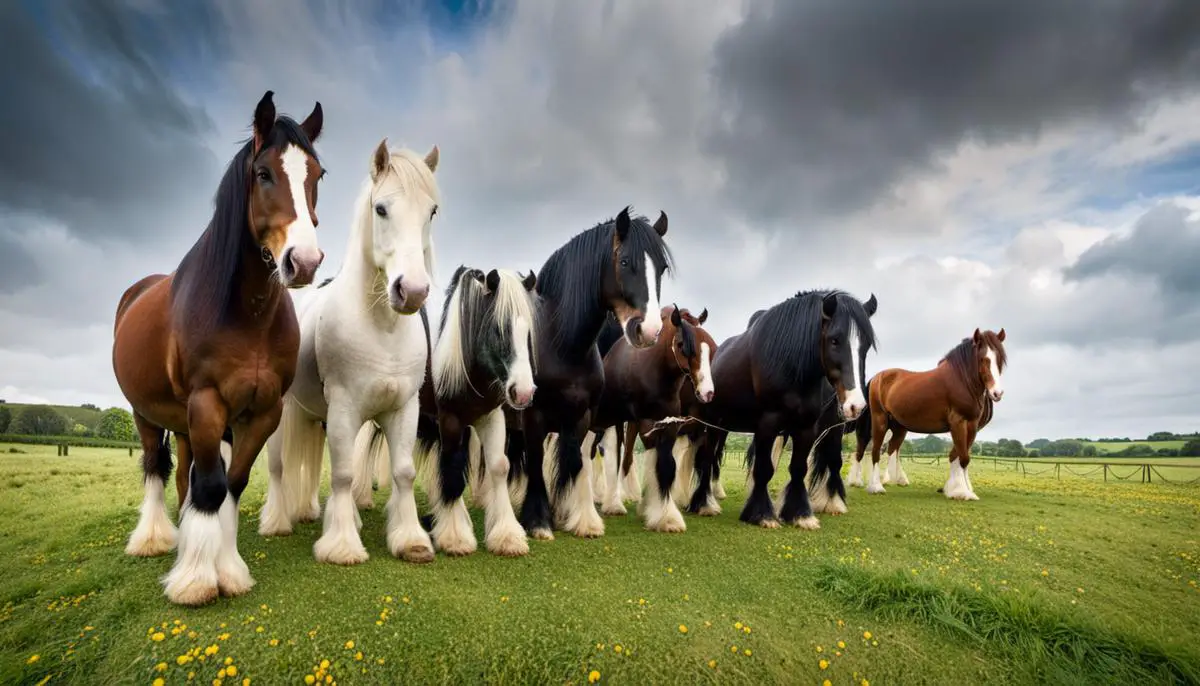
Care and Maintenance
Providing Care and Maintenance for Shire Horses
Being among the largest horse breeds, Shire horses necessitate a substantial amount of food and care. They are capable of consuming up to 2% of their bodyweight in hay alone, which equals around 40-50 pounds of hay daily for an average sized Shire horse. Therefore, the feeding costs for Shire horses are significant. Additionally, considering these horses need plenty of space to graze, housing costs should also be factored into the overall expenses.
Maintaining their coat and mane through regular grooming is a particularly important aspect of their upkeep. This helps prevent the development of skin-related conditions, and further enhances the bond between the horse and the owner. The Shire horse’s hooves also require special attention; they should be inspected daily and cleaned often to avert the risk of potential infections.
In terms of health, while Shire horses are commonly fit and healthy, they can also be susceptible to certain ailments like Chronic Progressive Lymphedema (CPL). Hence, regular veterinary visits are key in detecting any health issues early on. If a Shire horse is to be used for work or in show, professional training is another aspect that requires time and financial investment.
Care and Maintenance for Quarter Horses
Quarter horses, on the other hand, generally have a lower maintenance cost compared to Shire horses. They are smaller in size and thus consume less food, approximately 1.5% to 2.5% of their body weight, equating to 15-25 pounds of hay and grain per day.
Grooming needs for Quarter horses are similar to those of Shire horses, including regular coat brushing and hoof cleaning. Quarter horses also need room to roam, although they can do well in slightly more condensed spaces than Shire horses.
Healthcare for Quarter horses often centers on maintaining a healthy weight, as they are prone to obesity due to their high food consumption relative to body size, along with other potential health concerns such as hoof problems. Regular vet check-ups should never be overlooked.
Training Quarter horses might be somewhat easier and faster since they are renowned for their intelligence and quick learning ability. They are a versatile breed that excels in various equestrian disciplines, which might require specific professional training based on the owner’s expectations.
In general, while Shire horses may require more resources in terms of feed and space, both breeds require a commitment to regular grooming, healthcare, and training. Potential owners should take these factors into account along with their time, effort, and financial capacities when considering acquiring either breed.
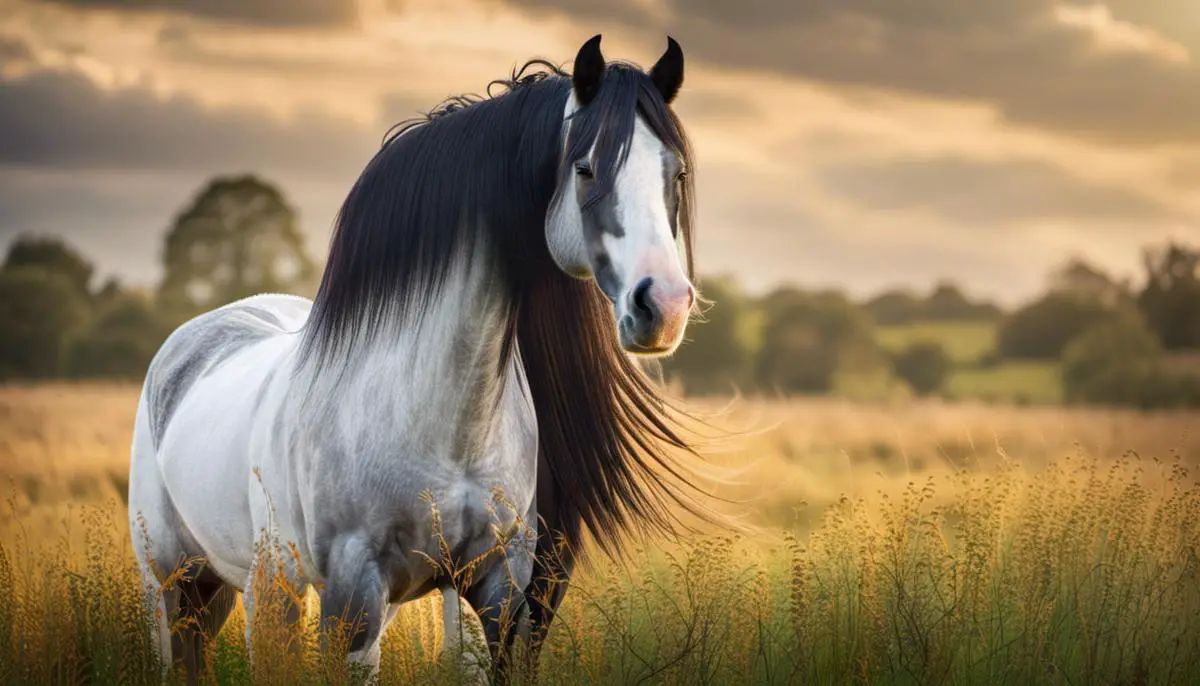
Unsurprisingly, the care and maintenance of these incredible breeds varies according to their unique requirements. While the Shire’s significant size requires adequate nutritional provisions and stringent healthcare processes, the Quarter horse, with its daunting agility, requires proper training and adequate exercise regimes. However, with proper consideration, both breeds prove to be incredible companions whose well-being and upkeep are a rewarding engagement. Providing invaluable experiences in various capacities, Shire and Quarter horses are undoubtedly, remarkable staples in the equine ecosystem, revealing compelling narratives beneath their remarkable physicality and spirited temperaments.
